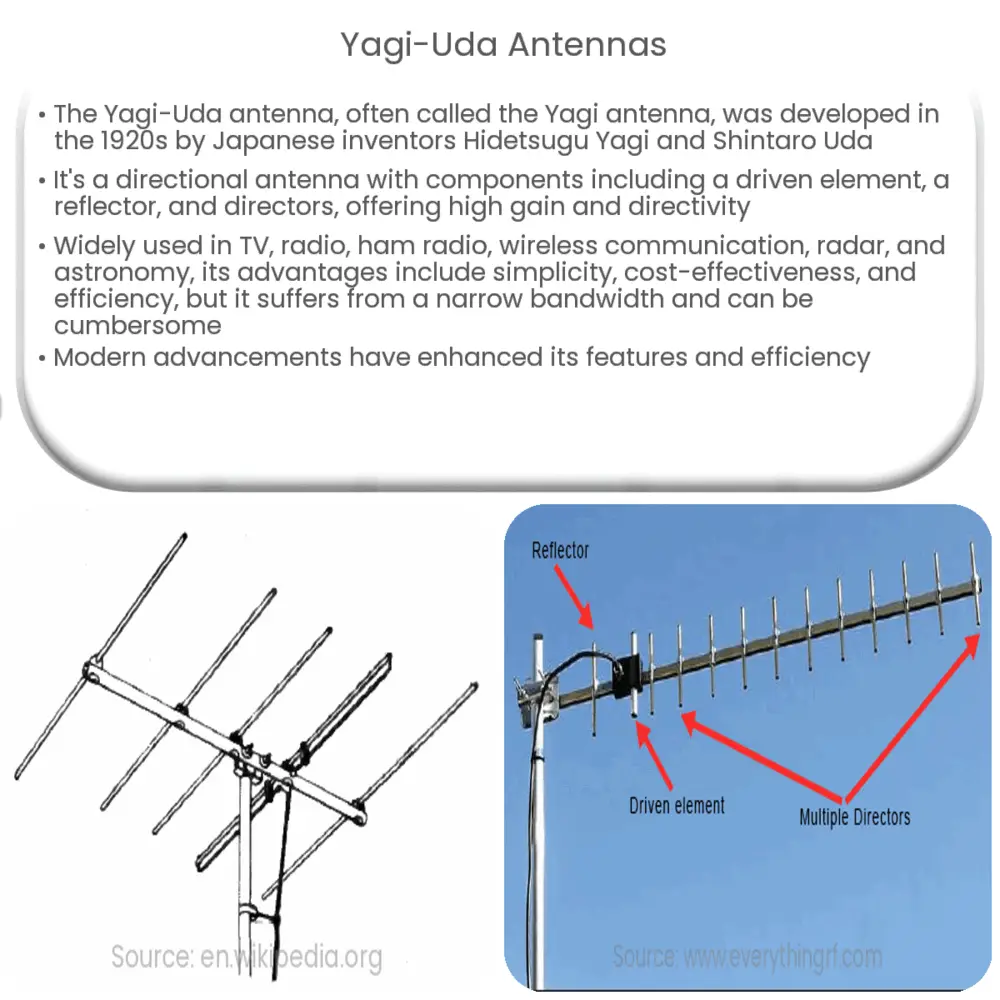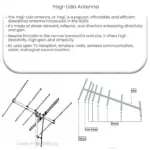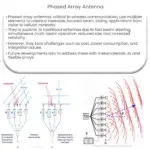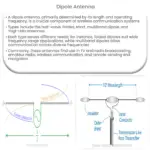Explore the Yagi-Uda antenna’s design, operation, applications, advantages, limitations, and modern improvements in our comprehensive guide.

Introduction to Yagi-Uda Antennas
The world of wireless communication is filled with a myriad of antenna designs, each serving a specific function or purpose. One such iconic design is the Yagi-Uda antenna, commonly referred to as the Yagi antenna. This type of antenna is named after two Japanese inventors, Hidetsugu Yagi and Shintaro Uda, who developed it in the 1920s.
The Yagi-Uda antenna is a directional antenna comprising an array of several parallel elements in a line, usually half-wave dipoles. They include one driven element, a reflective element, and one or more directive elements.
Structure and Operation
Understanding the design of the Yagi-Uda antenna is key to understanding its operational mechanism. The antenna typically contains three major components:
- Driven Element: This is the actual ‘antenna’ part of the Yagi-Uda. It is usually a dipole or folded dipole and is the part that receives power from the transmitter or delivers power to the receiver.
- Reflector: Located behind the driven element, the reflector is a bit longer than the driven element. Its main function is to reflect the radio waves, causing a directional pattern in the forward direction.
- Director(s): In front of the driven element are one or more ‘directors’, which are shorter than the driven element. These help to focus the beam further in the forward direction, enhancing the antenna’s gain.
The design of the Yagi-Uda antenna leads to a significant amount of gain. It has high directivity and front-to-back ratio, which means it focuses its energy in one direction and has low sensitivity to signals coming from other directions. This makes it an excellent choice for applications that require point-to-point communication.
Applications of Yagi-Uda Antennas
Due to their unique characteristics, Yagi-Uda antennas are used widely in various fields:
- Television and Radio: These antennas are commonly used for terrestrial television and radio broadcasting reception in suburban and rural areas where signal strength is relatively weak.
- Ham Radio: Due to its directional properties, the Yagi-Uda antenna is popular in amateur radio or ‘ham radio’ operations.
- Wireless Communication: Yagi-Uda antennas are also used in wireless communication systems, like WiFi and cellular networks, to provide focused coverage and minimize interference.
- Radar and Astronomy: They are utilized in radar systems for tracking and surveillance, as well as in radio astronomy for the study of celestial bodies.
Advantages and Limitations
Like all antenna designs, the Yagi-Uda antenna has its own set of advantages and limitations.
- Advantages: Its simple design makes it easy to manufacture and install. The antenna is highly directional and provides significant gain, making it efficient for point-to-point communication. Moreover, it is inexpensive and durable.
- Limitations: The Yagi-Uda antenna has a relatively narrow bandwidth. This means it is not suitable for applications that require broad frequency coverage. Additionally, despite being compact compared to other high-gain antennas, the Yagi can be somewhat large and unwieldy, especially at lower frequencies.
Modern Improvements
In the modern era, the Yagi-Uda antenna has been improved in several ways. Engineers have come up with folded dipole driven elements to increase bandwidth, and modifications like the addition of a ‘parasitic reflector’ to improve directivity and gain. The development of new materials has also made these antennas lighter, more durable, and more efficient.
Conclusion
In conclusion, the Yagi-Uda antenna is an iconic symbol in the field of wireless communication, standing as a testament to the engineering acumen of its inventors. Its unique characteristics of high gain and directivity, coupled with its simple structure and low cost, have made it a popular choice in various applications ranging from television and radio to ham radio, wireless communication, and more. While it does have certain limitations, ongoing research and improvements continue to enhance its features and capabilities, affirming its place in the ever-evolving world of wireless technology.




